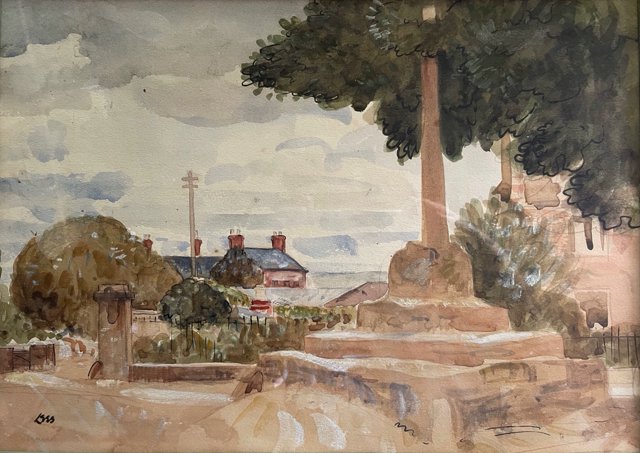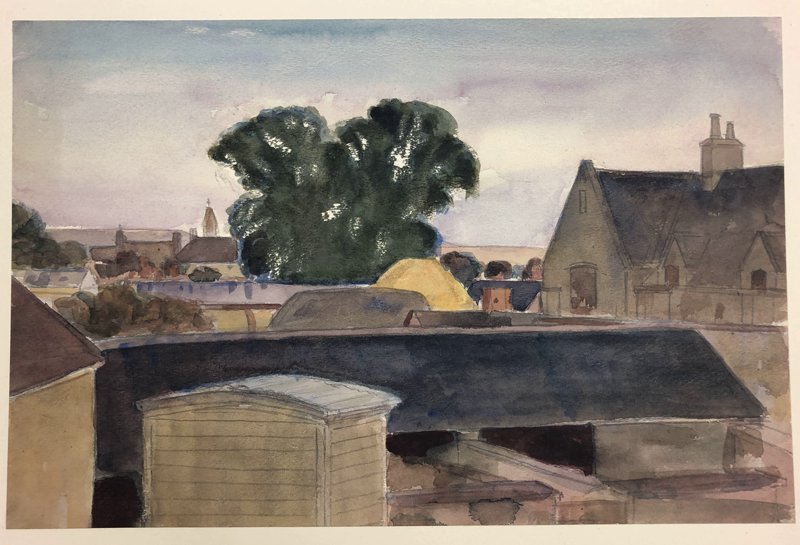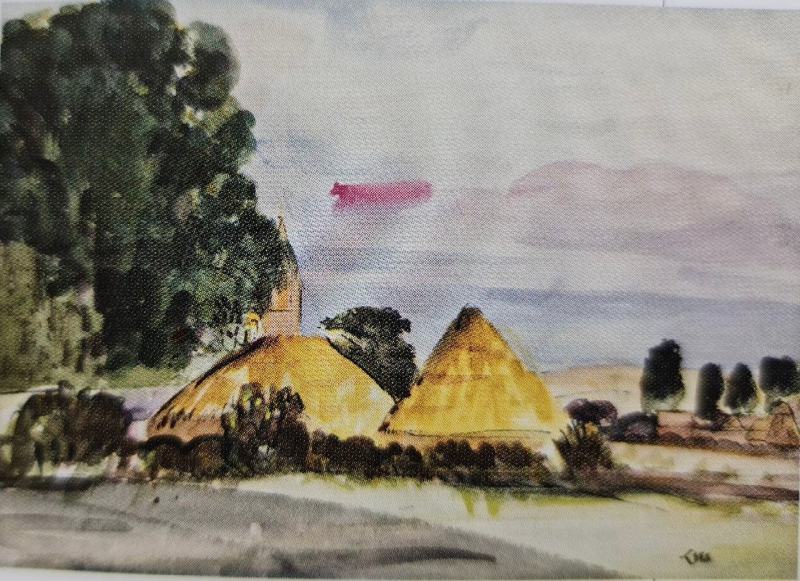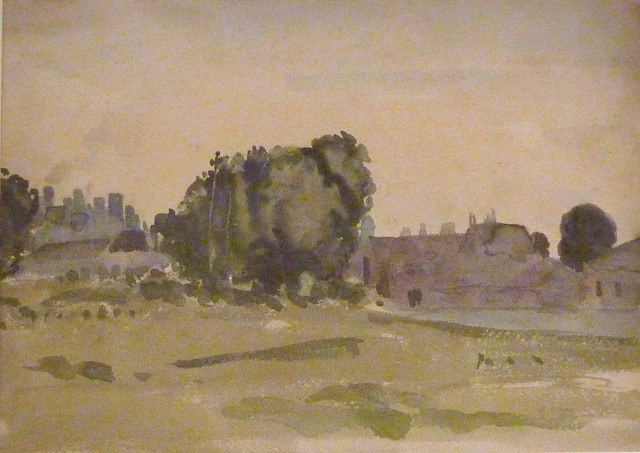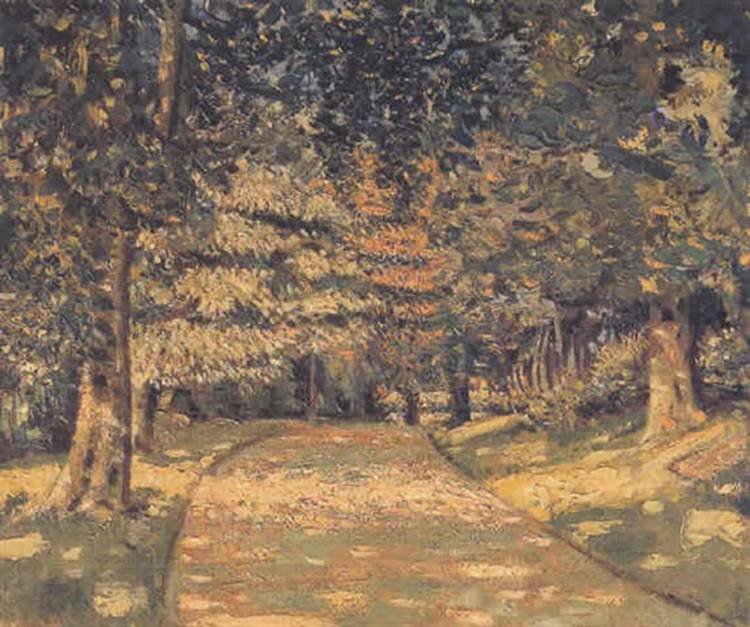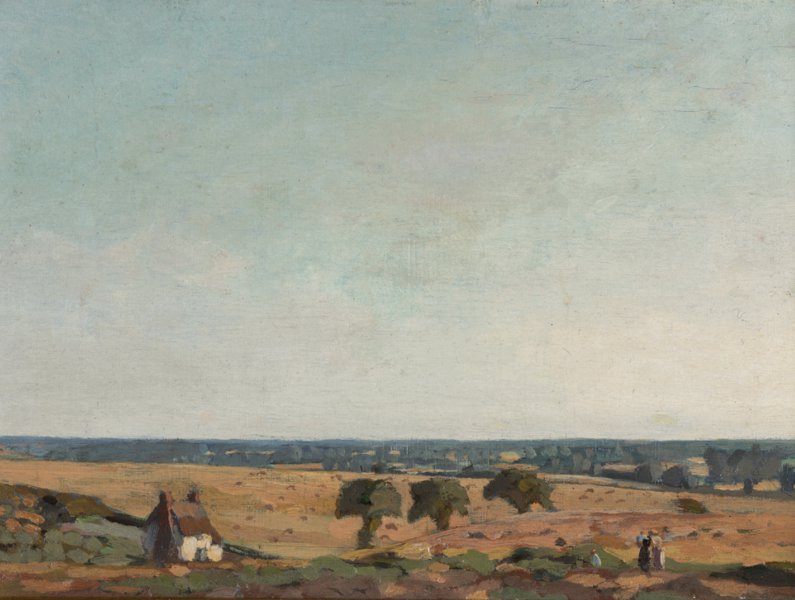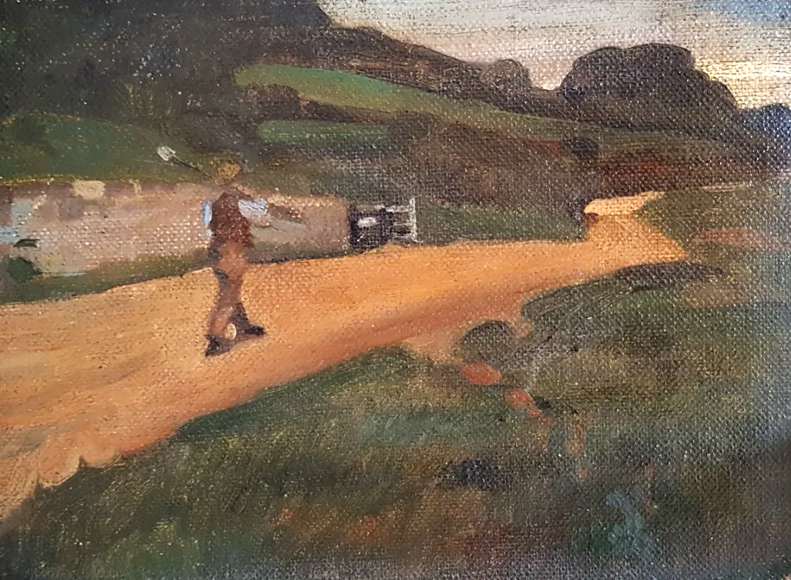Derwent Lees - an early 20th century Artist
We are grateful to Lynn Davies from Tasmania, Australia, for drawing our attention to the early 20th century artist, Derwent Lees. The following information was researched and written by Lynn for her book shortly to be published, Derwent Lees - Art and Life
Derwent Lees was born in Tasmania in 1884, the tenth child of a banker from Leominster England. At the age of 21 he enrolled at London’s Slade Art School finishing in 1908, where upon he became Slade’s Assistant Drawing Master, a position he held until the 1918. As a Slade academic Derwent mixed with a range of artists and collectors, one of whom was Cyril Butler of Bourton House. Cyril was a founder, treasurer and chairman of the British Contemporary Art Society (CAS) and it is probably through these connections that the two met around 1910. Both CAS and Cyril purchased his works. Cyril was also a close friend of Derwent’s Slade colleagues Henry Tonks and Philip Wilson Steer, the latter of whom did a large mural decoration for Bourton House at the turn of the century and a portrait of Mrs Butler with her children. It is likely that Philip organised for Derwent to spend the 1916 summer at Bourton House as a lot of artists had done. Derwent exhibited seven works from his painting trip at the 56th New English Art Club exhibition in the winter of 1916. They were In a Rock Garden, The Drive, The Vista, Village street Bourton, Two Haystacks, The Bend in the Road, and Bourton Cross. Sadly by the end of the War personal and health issues caught up with Derwent and in 1919 he was committed to Claybury Mental Hospital and later to Surrey’s West Park Hospital where he died in 1931. Today his works are held in 50 public institutions across eight countries.
Cyril Butler acted as host to other artists at around this time being; Ambrose McEvoy, who stayed at a cottage in Lower Bourton 1904 - 6; Philip Wilson Steer 1899 - 1902; Donald Maclaren 1910 -11; William Roberts 1912.
Year:
1916
Place:
Bourton
Ref:
Online only
Item Ref:
N371
Find it:
Online only
Do you know?
We are always on the look-out for more information about Shrivenham and district. If you have old photos, know of historical facts, old documents (especially deeds) please contact us...
If you would like to view any item please email us to make an appointment, details on the Home page.




